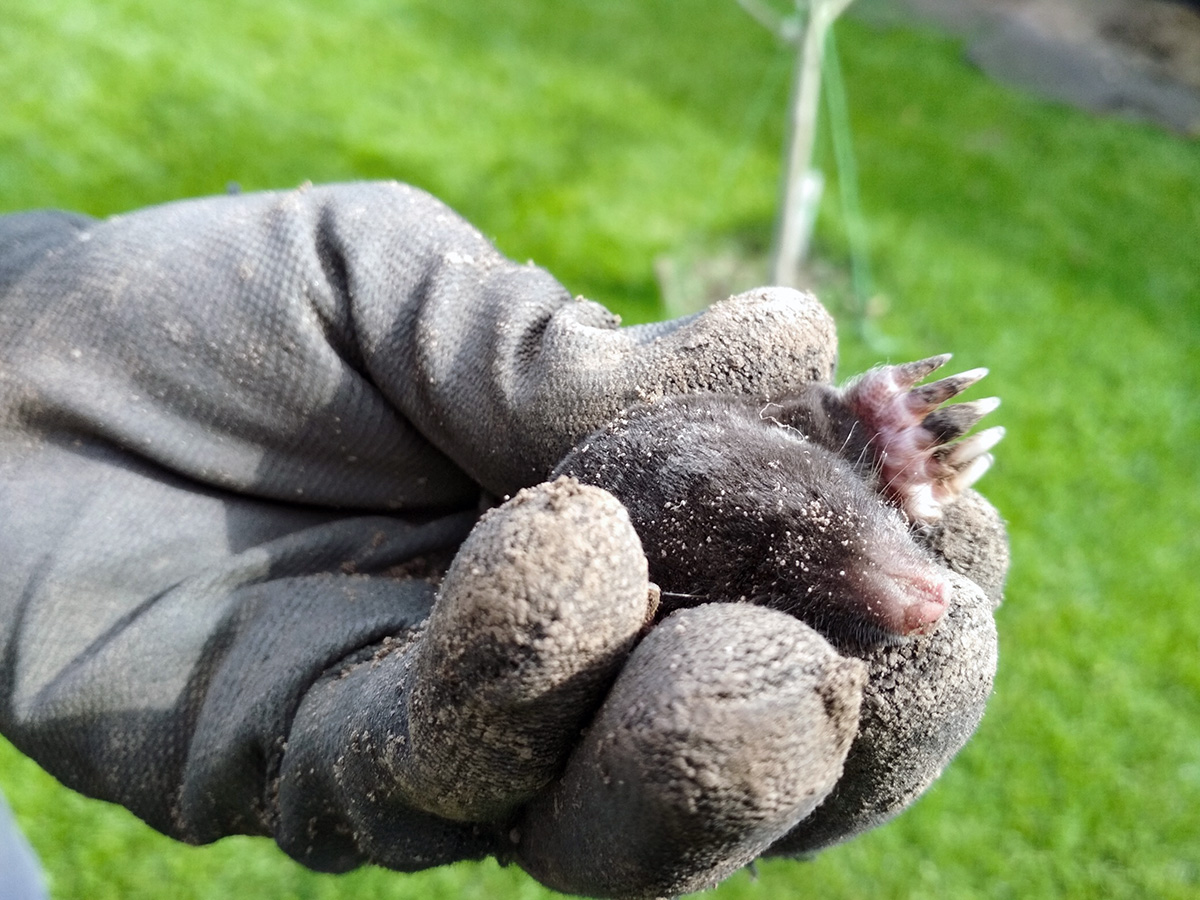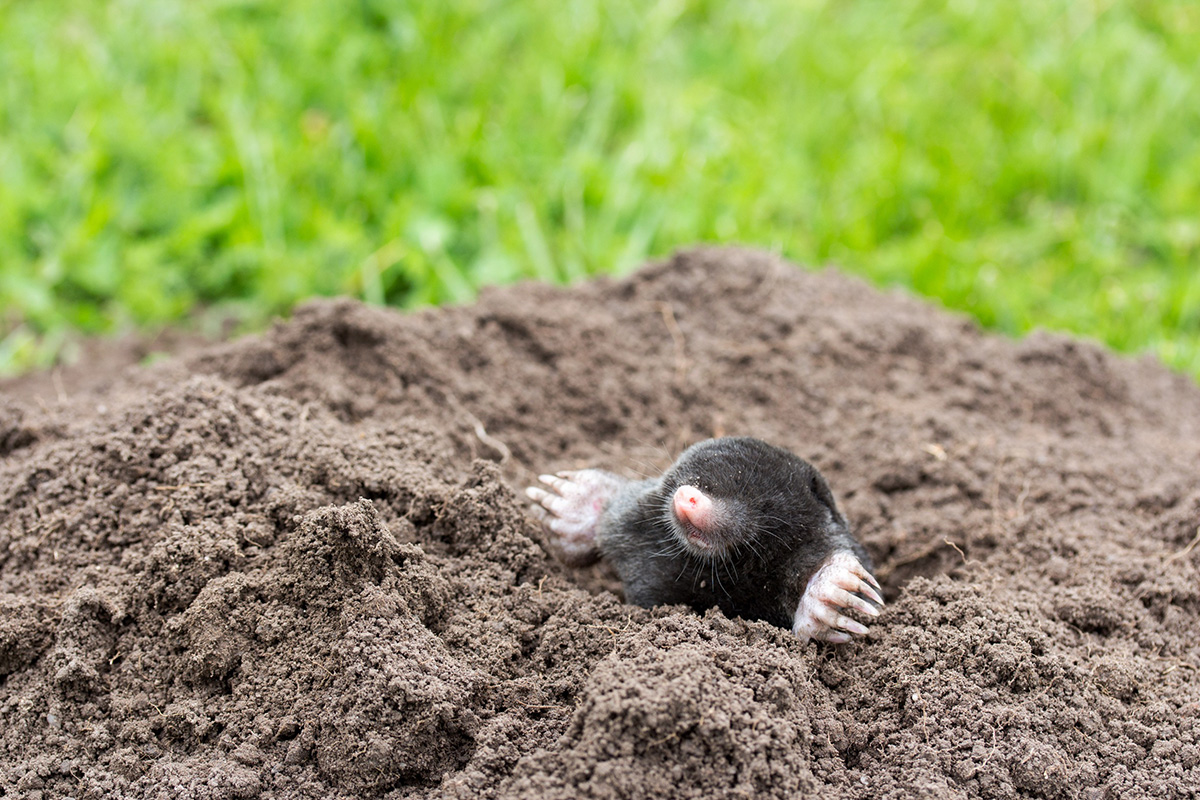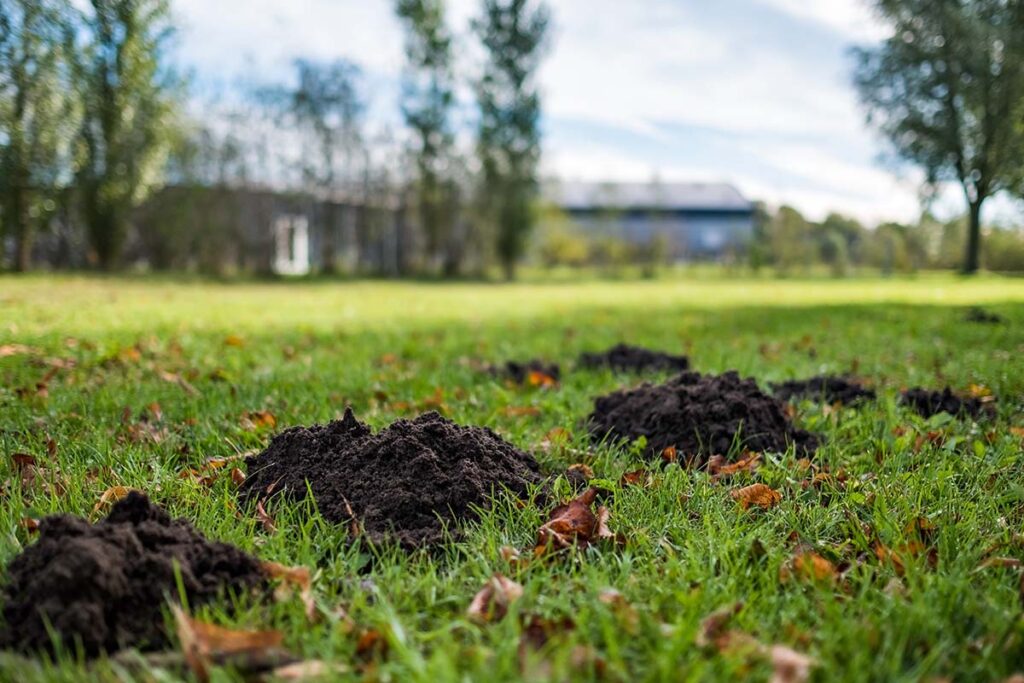Moles are an animal that interact with the soil aggressively as they dig tunnels for shelter and look for worms and insects to feed on.
These tunnels improve soil aeration. However, these benefits should only be felt in wide open fields and not near your house. With their strong digging ability, they can destroy your home environment. But, can moles damage house foundation?
Moles can cause serious damage to a house’s foundation, especially if the foundation is shallow. The tunnels the moles produce can hold water, and if this happens for an extended time near the foundation and the house walls, it can causing cracking. Ultimately, the freeze-thaw cycle takes place underground and can destroy the foundation.
The next time you see a mole around your house, there’s a possibility that they may damage your house foundation eventually. This article discusses the damage moles can do to your house and how you can get rid of them.
Do Moles go Under Houses?
Imagine having a beautiful nap time, and then you’re suddenly woken up by persistent scratching under your floor! That’s the first sign that moles have gone under your foundation and right under your house. Your house floor is acting as a barrier to their tunnel, and that’s why they are scratching it. They have to get to the other side somehow.
Houses with a shallow foundation are prone to this problem because the moles are able to dig their tunnels deep enough below the foundation. As they work through their complex tunnels, they find their way under your house. Moles are known to dig their tunnels along with house foundations, lawn borders, or the driveway.
Even though moles can go under your house, they hardly ever go into the house. This is because they feed on worms, insects, grubs, etc., which are available outside and under the soil. Therefore, they mostly stay in the yard and flower beds where there are mounds of mulch and peat moss.
If you often make compost manure within your compound, moles will love it there since there are many earthworms for them to eat. Any moment you add earthworms to your compost pile to boost its quality, you’re feeding the moles directly.

What Damages do Moles do to the Yard?
Most of the damage moles do on the yard is cosmetic as they leave the yard scattered with small mounds of soil. They also target the flower beds and vegetable gardens where they are likely to find worms for food.
You’ve probably heard people in your neighborhood complaining of moles eating their vegetables. This notion is incorrect because moles are carnivorous and feed exclusively on worms and other insects on the vegetables. While this could be a plus for you, the damages in the aftermath outdo the advantages.
Some of these damages include:
Promoting the Freeze-thaw Cycle, Which Destroys The House Foundation
As mentioned earlier, moles follow underground demarcations such as the foundation wall as they dig their tunnels. When it rains, water settles in these tunnels longer than it would if there were no tunnel. With time, the concrete cracks and the water seeps into the continuously expanding cracks as the freeze-thaw cycle takes place.
The damage can be huge, and your household’s safety compromised. As time progresses, the house faces the risk of cracking on a weak foundation.
Damaging the Plants in the Yard
Even though moles don’t feed on plants, they damage them in the end as they dig across your yard. Moles are aggressive in their burrowing habits. So, as they burrow under the grass and the flowers, they destroy their roots and leave them frail.
Flowers and vegetables may even get uprooted in the process. Some of the vegetation, especially the native vegetation, may survive this intrusion, but others may not. Not all moles dig shallow tunnels; some dig deep into the soil and so do not harm the crops.
The Yard Looks Unattractive With so Many Molehills
The yard offers spaces where you can relax, read a book, or even play with the children. If there are so many soil mounds as a result of mole activity, the yard will look not only bad but also be unsafe for play.
Mostly, the soil from the mole diggings is soft and slippery. It’s easy to fall and get injured. This means that it would pose a risk to children or anyone playing around them.
How do you get Rid of the Moles in Your Yard?
Having one mole roaming around your yard may not be too harmful, and you can control it fast. The problem comes in when there is an infestation of moles. Just when you thought you had the perfect garden in your yard, the moles decide to launch their highway there.
Before you run around fumigating and setting traps, it’s important to determine the activity of the moles and why they are in your yard. It’s possible they will leave when they can’t get much food around your home.
The surest test for this is to stomp on a molehill and then watch if the moles will push it open again. If nothing happens for weeks, the moles are long gone.
If they are still there, you can use any of the following methods to get rid of them:
Use Traps
Using mole traps allows you to catch the moles ‘red-handed.’ Even though it’s an effective method, some states and areas may not allow it. It’s important to check the legal guidelines on mole control in your state.
An effective trap is one that lures the mole and catches it. So your bait should be a worm or insect because these are mole’s favorites. Ensure that it’s set properly so that it catches the mole effectively.
Mole Fumigation
This is where you spray a poisonous gas into the mole tunnels and kill them inside. This method may not be too effective because moles dig their tunnels in a complicated pattern, and the gas may not reach everywhere.
If the tunnels have multiple openings, the moles can escape to safety before your poison gas reaches them. If you choose this method as your preferred way to eliminate them, you’ll need the help of a professional so that you can be sure the fumigation is done correctly.
Poison Traps
This method involves placing poisoned baits on the mole’s path so that they die after eating them. Most people practice this method even on other rodents like rats and mice. For moles, you must ensure that you use something attractive to them so that they eat it.
This method can put your health at risk, or other household animals, if not carried out the right way. You should engage a professional and get the job done the right way.

Keeping Moles away from your Yard
After eliminating the moles, the next thing is to ensure they do not return. That calls for radical actions that close all the loopholes.
Some of these actions are:
- Avoid over-watering your vegetables or flowers so that worms like earthworms stay away. A place with many worms will invite moles to your yard.
- Consider replacing grass areas with shrubs to avoid more destruction. Moles thrive in areas with lawn grass, unlike in shrub areas.
- Plant more native vegetation because they are more resistant to destruction. In most cases, imported plants might attract different worms and insects that moles love, and thus inviting moles to your yard.
- Protect your yard from the moles using perimeter barriers. If they can not get into your yard, then they can destroy it. Consider using raised beds and critters to keep them at bay. Also, you can use readily available materials like sheet metal and hardware cloth buried at least two feet into the soil.
- Keep a carnivorous pet like a dog or cat, which can scare away the moles. Even though the moles spend most of their time underground, having a dog or cat around can chase them away.
- Avoid preparing compost manure within your compound because the moles will come in pursuit of the worms present there. You can do this outside your yard or far from your house.
From these points, you can tell that landscaping plays an important role in controlling the moles and protecting your home. If you notice a mole in your yard, the next place it could be headed to is your house foundation, so it’s time to investigate!

